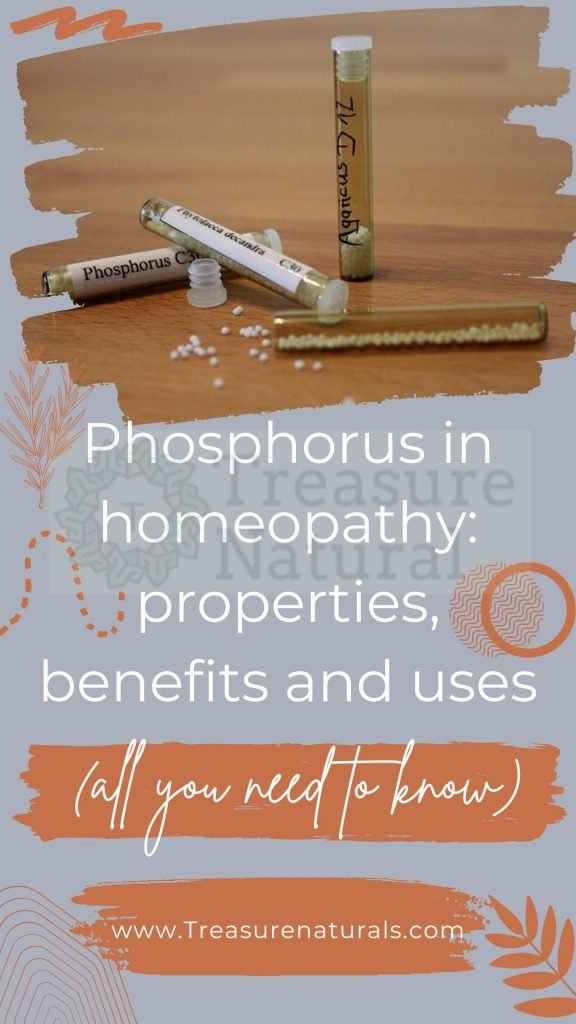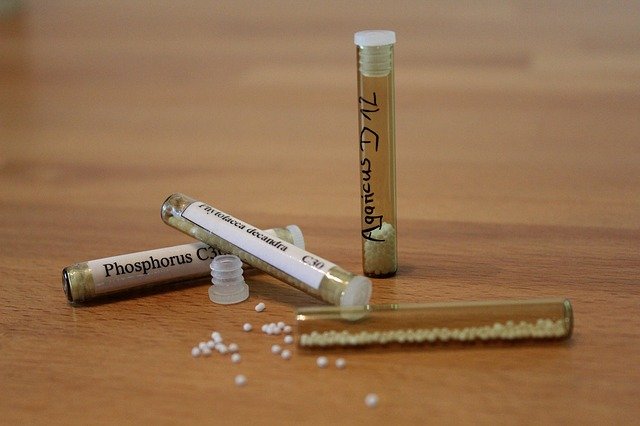
The homeopathic remedy Phosphorus originates from white phosphorus and in Homeopathy it is indicated mainly in the care of anxious and fearful subjects suffering from nervous and digestive disorders.
PHOSPHORUS IN NATURE
Phosphorus, whose chemical symbol is P, is a non-metal quite abundant in nature (0.12% of the earth’s crust), where, however, it is not found in the elementary state but in the form of phosphate, especially in sedimentary rocks and minerals.
There are three allotropic forms of phosphorus, identified by their color:
- white phosphorus: it oxidizes rapidly assuming a yellowish color, burns spontaneously in the air at a temperature of about 35 ° C, is poisonous and is the most marketed form for its chemical properties;
- red phosphorus: it is the most stable form, it is not flammable spontaneously but ignites only by impact or rubbing and therefore used for the manufacture of matches, it is free of toxicity;
- black phosphorus: it is similar to graphite and has very few applications.
Phosphorus is one of the essential elements of animal and plant life, as it performs numerous biological functions of fundamental importance. In the human body it is present in all cells, both in inorganic and organic form, and is found:
- in bones and teeth (80-85%),
- in muscle tissue (10%),
- in the brain (1%),
- in the blood (0.5%),
- and the remaining part in the other tissues.
Uses of phosphorus
The name phosphorus comes from the Greek phos (light) and phorein (to carry): phosphorus was in fact defined as a bearer of light and, not surprisingly, was used for this purpose for the construction of the head of matches. Around the early 1800s matches containing white phosphorus became widespread, although they soon proved toxic to production workers. For this reason, white phosphorus matches were abolished and replaced by red phosphorus matches.
Today phosphorus compounds, in the form of phosphates, are used in various industrial applications: in the production of fertilizers, detergents, toothpastes, matches, fireworks, metallurgy, rat poisons and more.
In addition, phosphates are also found in a wide variety of foods, such as cereals, legumes, eggs, meat, fish. The food industry widely uses polyphosphates as additives (classified with the abbreviation ranging from E400 to E495), to improve the appearance and texture of various foods (melted cheeses, canned meats, cooked ham, cold cuts, sausages, sauces, puddings, surimi, fish sticks, etc.) and as thickeners to increase the amount of water retained.
Phosphorus: homeopathic remedy
The homeopathic remedy Phosphorus is obtained from a solution saturated in pure white phosphorus alcohol and subsequent dilutions-dynamizations in hydroalcoholic solution.
Phosphorus is one of the most important polycris of Homeopathy, Its constitution is phosphoric and the temperament is nervous-blood.
It is mainly the remedy for acute and chronic pathologies of noble parenchymas, such as heart, liver, kidney, hemorrhagic states, lung diseases, neurasthenias, neuritis (in particular of the optic one), skeletal and dental alterations (in particular of rickets).
Phosphorus is one of the largest homeopathic remedies with a wide field of application in clinical practice as it covers countless diseases both acute and severe. The remedy acts at the level of:
- nervous system: of the nerves and mainly of the optic nerve,
- of the bones,
- teeth,
- of blood,
- mucous membranes
- all major organs and systems (secondarily).
Its main complements are: Allium cepa, Arsenicum album, Carbo vegetabilis, China, Ipeca, Lycopodium, Sanguinaria, Silicea. Its antidotes (but which help its action) are Calcarea carbonica, Camphora, Mezereum, Nux vomica, Sepia. And finally its incompatible are Apis and Causticum.
Phosphorus: constitutional type

The Phosphorus type has a long-limbed appearance, is tall, slender and not very muscular. His chest is thin, narrow and long, it can easily highlight a polymorphism (kyphosis, scoliosis) of the spine. The examination of his features at first glance can make one think of a sickly person; in fact it is pale and tends to be anemic, but nevertheless expresses a certain harmony of the whole without harshness of expression.
The subject Phosphorus can be compared exactly to a match. When the head (whose main component is phosphorus) ignites, the flame flares up, rises and quickly wears out leaving a charred blackish residue. This is how the Phosphorus type presents himself psychically, who initially gets excited and throws himself headlong into realizing his projects but soon becomes discouraged and does not complete what he has undertaken.
Below are its main clinical features:
Psychic symptoms
- in the stenic phase: optimism, anxiety, agitation
- in the asthenic phase: apathy, sadness, fears (temporal, disease, death)
General symptoms
Asthenia; thinness; burning (palm of the hands); hemorrhagic tendency; steatosis tendency; anaemia.
Local symptoms
- head: congestive headaches with flushing; dizziness; sees greenish halos around the lights (glaucoma)
- digestive system: gingivitis, canker sores; necrosis of the maxillary; intense thirst for cold drinks; voracious hunger; sore liver; constipation; painless diarrhea
- respiratory system: nosebleeds; painful hoarseness
- cardio-circulatory system: palpitations; right heart failure
- urogenital apparatus: mental sexual arousal; long menstruation; amenorrhea with vicarious hemorrhages; perigenital warts
- locomotor apparatus: necrotic tendency species of the maxilla; flaccid paralysis by medullary degeneration; tremors
The subject of phosphoric constitution tends to the Phosphorus phase around the age of 40 and usually his symptoms present the following modalities:
- worsen with cold (except for symptoms of the stomach and head); at every change of weather; in the period from dusk to midnight
- improve while lying down (not on the left side) and sleeping






